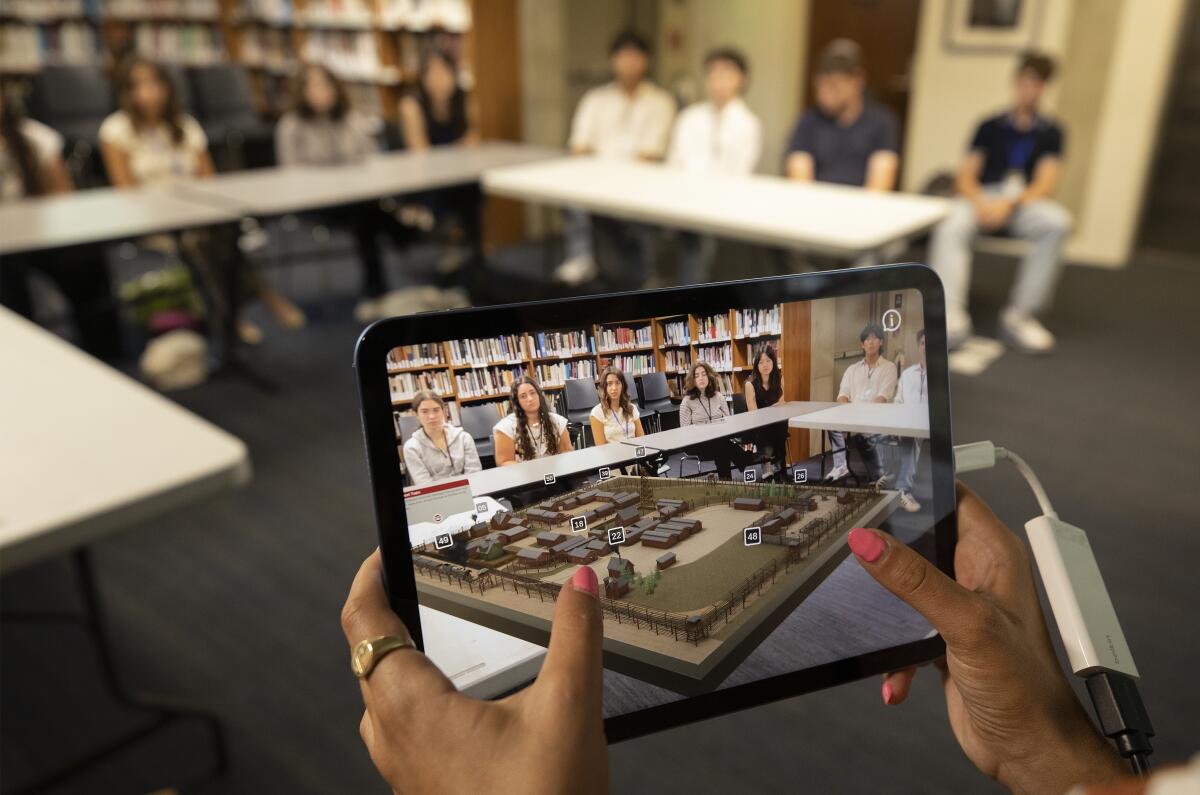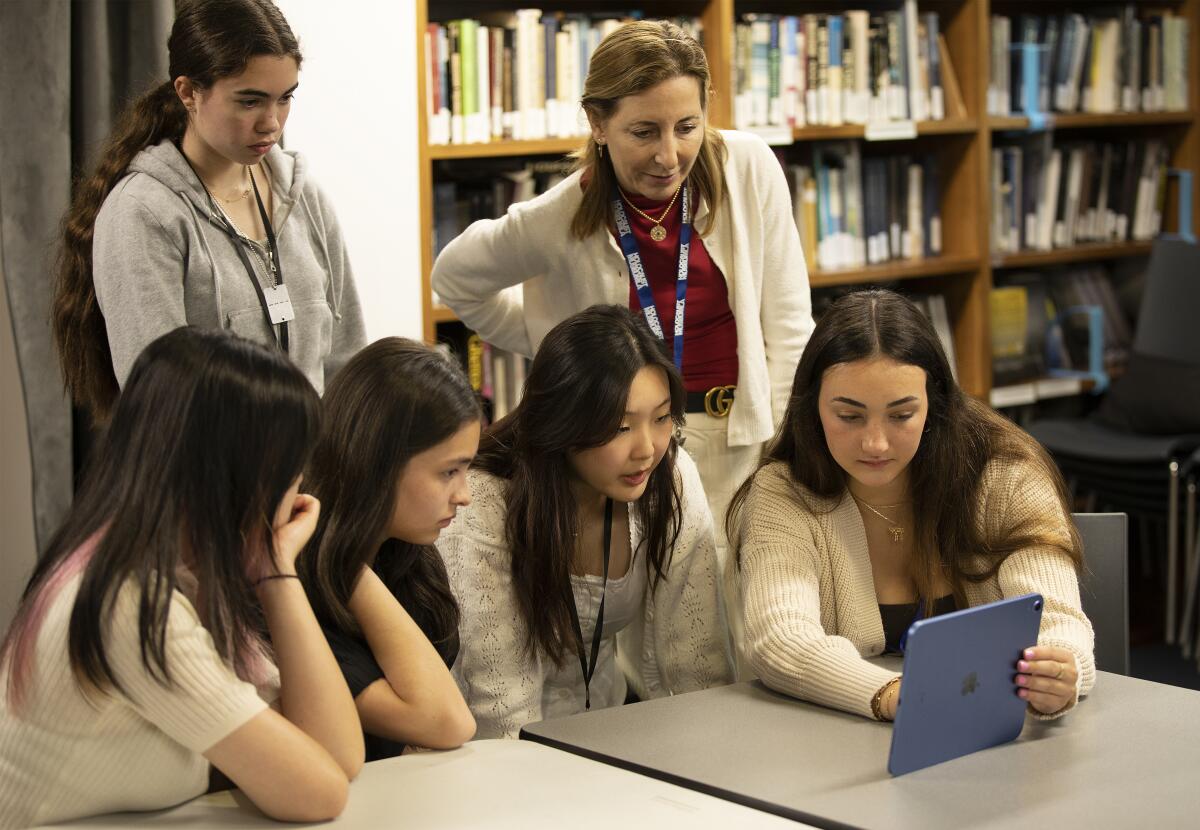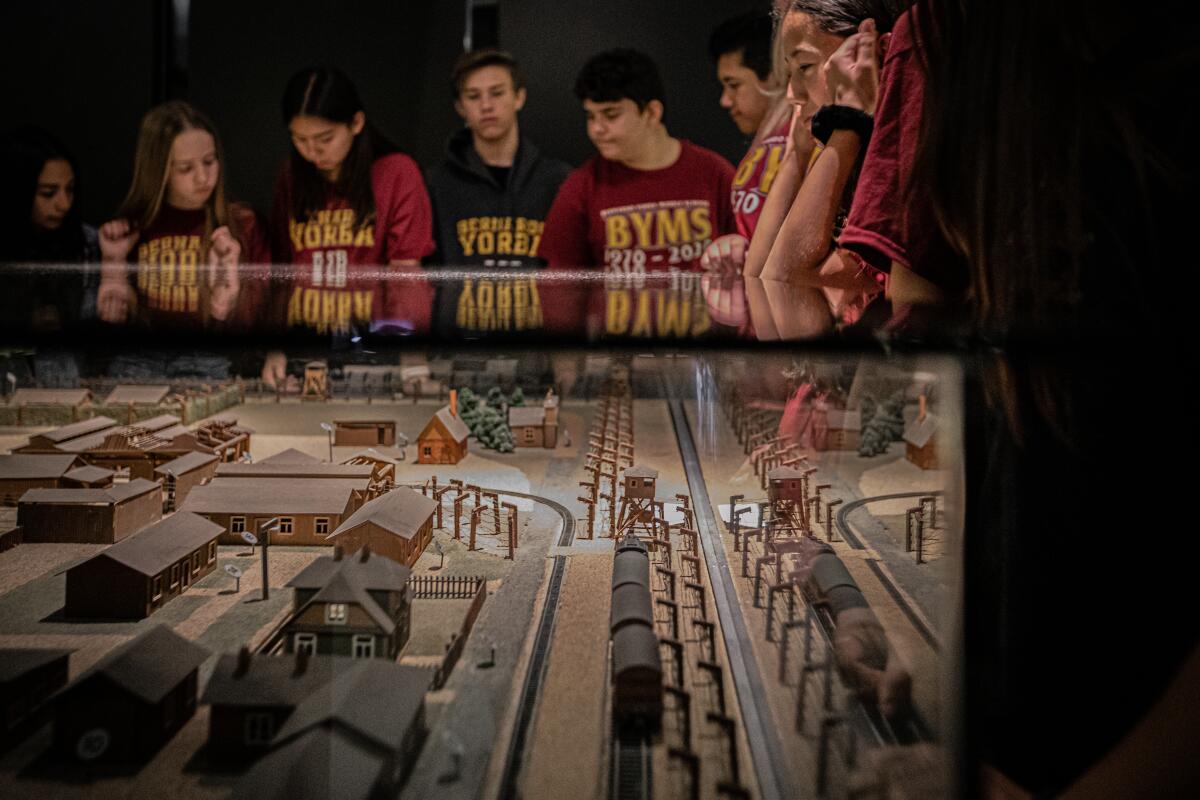Holocaust Museum L.A. launches new augmented-reality app with an assist from Hollywood

- Share via
Holocaust survivor Harry Davids has dedicated his life to uncovering the story of the parents he never knew.
Born in Nazi-occupied Holland in 1942, Davids was just an infant when his parents were deported to the Sobibor extermination camp in Poland and murdered. After the war, he was raised by relatives in South Africa and spent decades trying to learn the details of his family’s history, a task made more difficult by the fact that the perpetrators had dismantled Sobibor after the war and planted trees to cover up the site where at least 170,000 people had been systematically killed.
“The 10th and final stage of genocide is denial,” Davids says. “The Nazis successfully got rid of the evidence at Sobibor and several other camps.”
Now, thanks to a groundbreaking collaboration between Hollywood and Holocaust Museum Los Angeles, this lost history has been been reimagined with 21st century technology. The oldest Holocaust museum in the U.S., Holocaust Museum L.A. has teamed up with the technology studio Magnopus, led by visual effects artists Craig Barron and Ben Grossmann — who earned Oscars for 2008’s “The Curious Case of Benjamin Button” and 2011’s “Hugo,” respectively — to create a new educational app that uses augmented reality to bring Sobibor to virtual life.
The Sobibor AR exhibit, available for free download in Apple’s app store, allows users to interact with a 3D model of Sobibor, with actor Ben Feldman serving as a holographic guide providing historical context and encouraging deeper exploration of the camp’s layout and daily life. The app centers on the story of Polish survivor Thomas Blatt, who escaped from Sobibor during a famous 1943 uprising and created a detailed map from memory, including key locations such as the barracks, guard towers, gas chambers and mass graves.
The museum, which was founded in 1961 by a group of Holocaust survivors, houses a physical model of Sobibor based on Blatt’s map. But Davids, who frequently speaks to young people about what happened to his family and the millions of other victims of the Holocaust, says the app allows for a more immersive experience.
“The glass that covers the original model is taken away and you sort of become part of the exhibit yourself,” he says.

For the museum, which has already experimented with virtual reality technology in its exhibits, the app represents a new way to engage younger generations in the history of the Holocaust. The museum has created an accompanying guide for educators and, since the soft launch of the app last year, says it has trained 123 teachers to use it, reaching more than 150,000 students.
“We know we’re at the point now where young people, when they come to the museum, think, ‘Oh, this is ancient history,’” says Holocaust Museum L.A. Chief Executive Beth Kean. “We have to get their attention the minute they walk off the bus and make sure they understand why they’re here. We need to make this history relevant and accessible to them and teach it to them on a level that they understand.”
In 2019, the museum began partnering with the “cross-experience” company Magnopus to develop the app, leveraging artifacts and photos in its collection along with its physical model of the Sobibor camp.
“Most of us here at Magnopus work in the film industry in some capacity and we tell fantasy stories,” says Barron, the company’s creative director, who has done VFX work on such films as “Raiders of the Lost Ark,” “Batman Returns” and “Titanic.” “This was an opportunity to tell a real-life true story. Thomas Blatt’s map was basically a witness to his experiences that we could add value to and bring forward beyond the walls of a physical museum.”
For everyone involved, it was critically important that the app be firmly grounded in firsthand historical documents and artifacts. “The ethos of our museum is that we believe that primary sources and survivor testimony are crucial to Holocaust education and fostering empathetic responses to history,” says Jordanna Gessler, Holocaust Museum L.A.’s chief impact officer. “The Sobibor model felt like the perfect object to launch this initiative around because it embodies so much of this history and what this institution believes in.”
In its research for the project, the team at Magnopus pored over primary sources, including home movies of Blatt visiting the Sobibor site, Nuremberg trial testimonies and a photo album left behind by the camp’s commandant. Blatt himself died in 2015 at age 88, but his daughter helped give input to the project.
“It all starts with a script — you know, it is Hollywood — and we go back and forth with the museum and look at it for accuracy,” says Vince Beggs, museum experience specialist at Magnopus, who has worked on hundreds of museum exhibits and programs. “If we deliver the wrong information, we’re going to fail. We spent a lot of time on: What’s the story? A lot of people have memories of being at Sobibor and we’ve seen those published, but this is specifically Thomas’ perspective.”

While Magnopus has an array of eye-popping virtual reality and AR tools at its disposal, including some developed in collaboration with Epic Games, the goal was always to approach the app as an educational tool rather than a piece of gee-whiz tech. “Anything that felt like a computer game, we stepped away from,” says Barron. “We had to treat the subject matter with utmost respect and not try to make it theatrical. The fact that prisoners escaped is a compelling enough story, so we just had to depict it as accurately as possible.”
For Holocaust Museum L.A., which is currently closed as it undergoes an expansion that will double its footprint in Pan Pacific Park, the app offers a way to continue its mission at a time of rising antisemitism fueled by ongoing conflict over the war in Gaza. According to an audit conducted by the Anti-Defamation League, antisemitic incidents in K-12 schools jumped 135% in 2023 over the prior year. “When you look at what we’re facing, the statistics are horrific,” says Kean.
Against that backdrop, Magnopus is exploring other ways it can collaborate with the museum on cutting-edge educational tools, including an app in which users would enter the pages of a Nazi children’s propaganda book to learn about how German youth were indoctrinated with antisemitism. “Reaching out to subvert children is hideous, but it’s something that we have to not turn away from but rather delve into and share with others.”
Having spoken about the Holocaust to thousands of young people over the years, Davids is encouraged by the fact that future generations will have new ways to engage with this tragic chapter of history.
“It’s very heartening for people like me to know that these new techniques come along that will foster this education,” says Davids, a photograph of whose mother is included in the app. “We don’t simply learn about history — we learn from it. After people like me are gone, somebody has to speak for us. Who speaks for us? Whatever is left, whatever can be preserved.”
More to Read
The biggest entertainment stories
Get our big stories about Hollywood, film, television, music, arts, culture and more right in your inbox as soon as they publish.
You may occasionally receive promotional content from the Los Angeles Times.











